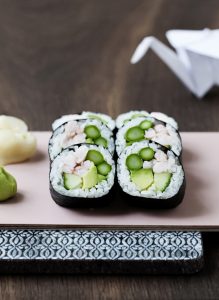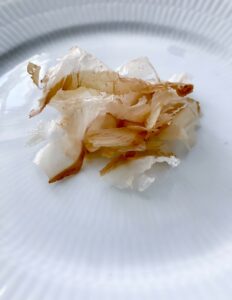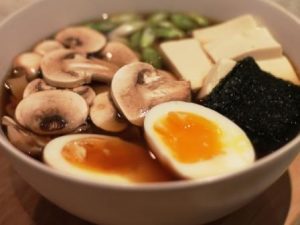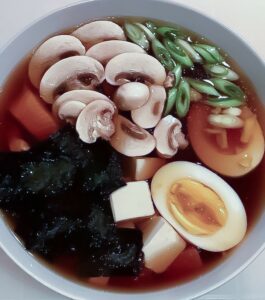
Shiitake mushrooms are quite unique, as it is a mushroom that has several aromas and depth in the taste.
Shiitake is a mushroom that is very intense in taste. Shiitake mushrooms have a hard stem. It is a strain that is often removed in the preparation of a dish, as it can be hard to chew on.
Exactly the stem should always be kept. The stem of Shiitake mushrooms has a very concentrated and aromatic taste, which gives the dish depth.
In Japan, Shiitake mushroom is used in many different ways. It ranges from fried noodles to stews that simmer for several hours. The possibilities are endless.
Shiitake is now available year-round in many supermarkets. However, there may be periods when it can be difficult to get hold of the fungus.
Read more about Traditional Japanese food course for beginners
_
Zoë has lectured and held sushi courses for A. P. Moller – Maersk, Hugo Boss Nordic, Novo Nordisk, Novartis, Velux, Gorrissen Federspiel, Beierholm revision, Elbek & Vejrup and many more.









